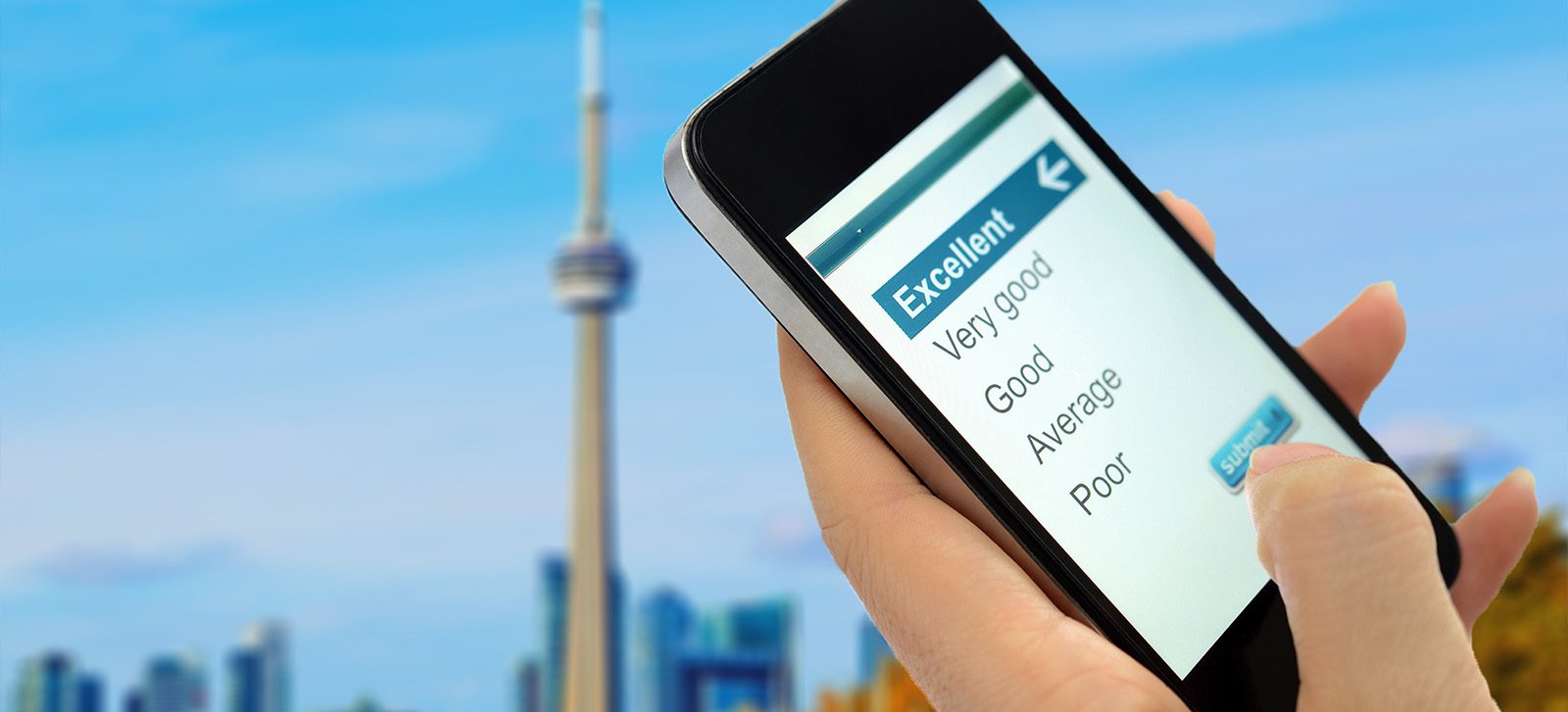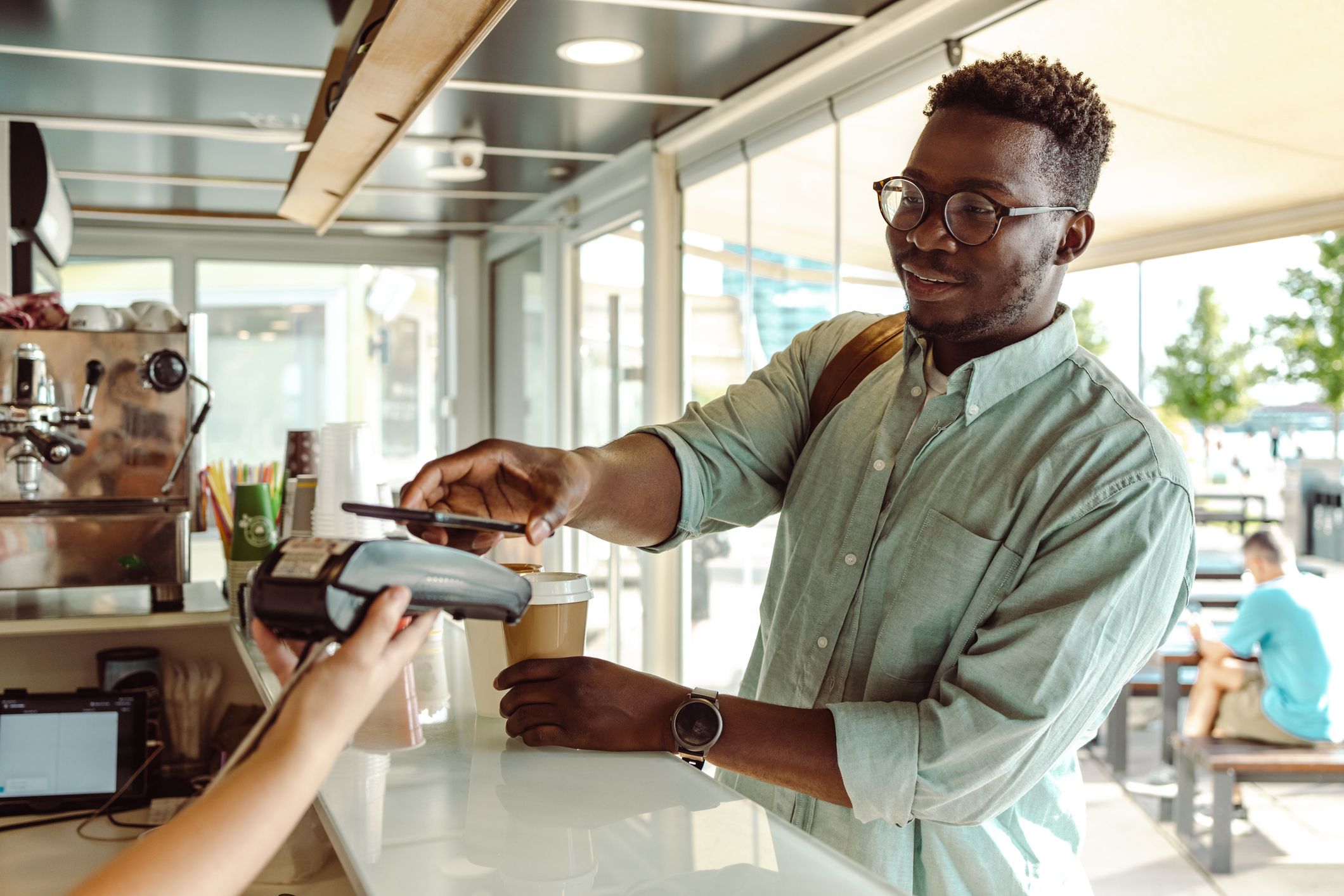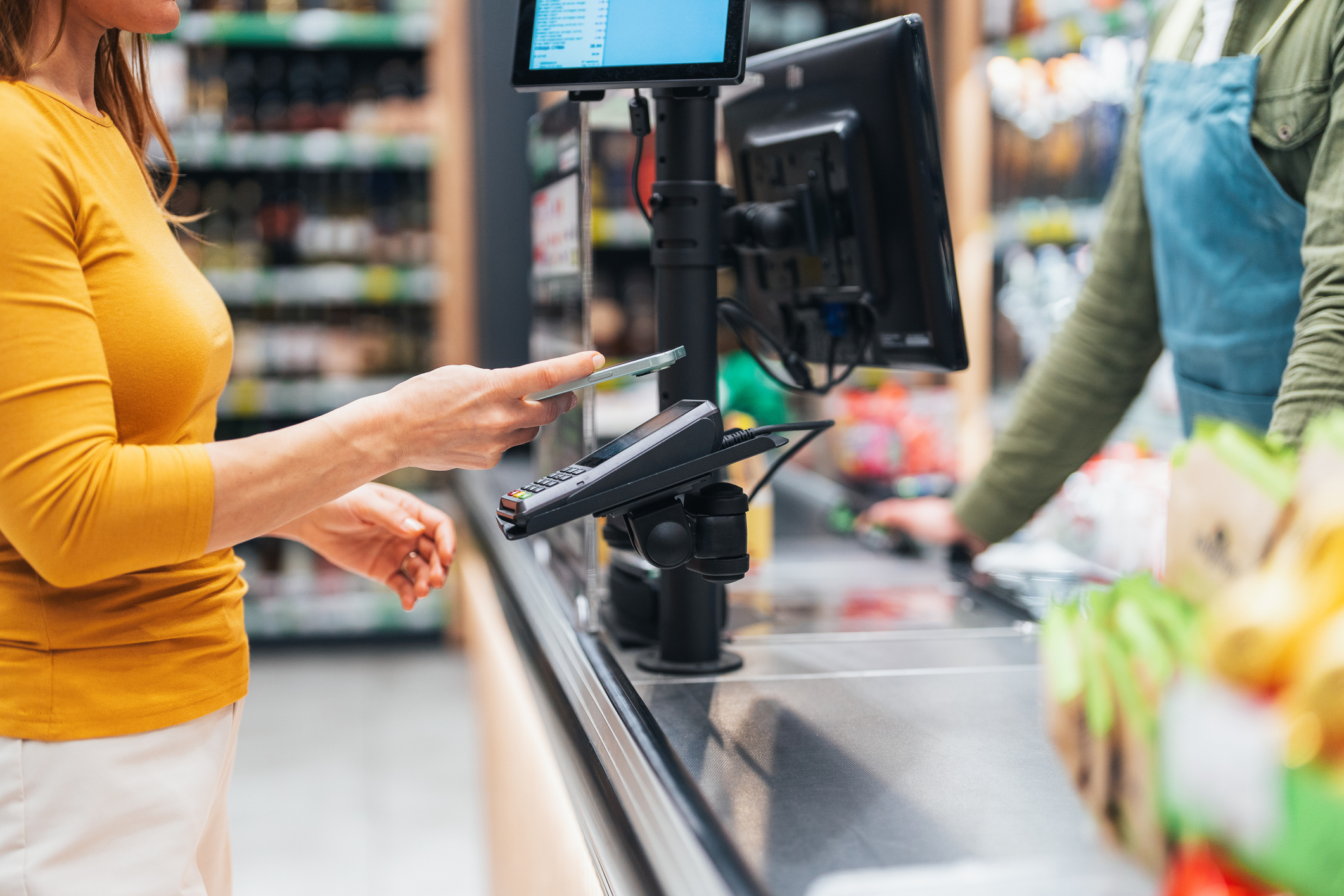For Toronto residents, it was a chance to mix and mingle with some of the biggest stars in the world. For the Toronto Raptors organization, it was a chance to lure potential future free agent prospects. But, for Environics Research, it was a chance to partner with our friends at the Humber RAPP program and test out in-the-moment data collection using a new mobile research technology.
The Technology
For this exercise, we put an application called Bounty, by Twentify, to the test. Bounty recruits audiences via social media and asks them to complete simple tasks in their area using a smartphone app. The app works with marketers to help them crowdsource and engage audiences, and can be used to collect in-the-moment observations that can help researchers better understand a target audience. Such tasks could involve mystery shopping or customer experience surveys, but we’ve found the most powerful tasks are those that give us an intimate understanding of how an audience experiences an activity or event. In our recent study, we asked Torontonians to chronicle their interest and participation in the NBA All-Star Weekend to get a sense of how connected they were to the event and identify future sponsorship opportunities.
By piloting this new technology, we hoped to answer the following two questions:
- What kind of in-the-moment observations can we leverage from mobile ethnography?
- What types of audiences are best suited for this type of methodology?
In answering our first question, we looked to see how well the Bounty app could truly immerse us in an audience experience. To do this, we used the data we collected to show how three individuals experienced the NBA All-Star game.
Note: Some names and details have been changed to protect the identities of our participants.
Fan Experience 1: Jason at a Friend’s House
Our first fan experience came from Jason, a proud Torontonian living in North York around the Finch and Yonge area. His favourite players are Kyle Lowry and DeMar DeRozan, and he was excited that his city was hosting the first ever All-Star game outside the United States. By cross-referencing Jason’s home postal code with our sister company, Environics Analytics’ proprietary database, PRIZM5, we can see that Jason is likely a member of the Asian New Wave segment, characterized by younger, lower-middle income singles and families living in an area that is dominated by a wave of Asian immigrants. Many Asian New Wavers are foreign-born, and most have come to Canada during the 1990s or more recently.
Although Jason had originally planned to have a quiet night in and watch the game at home, the excitement got the best of him and he decided instead to drive up to his friend’s house in Vaughan to enjoy the game.
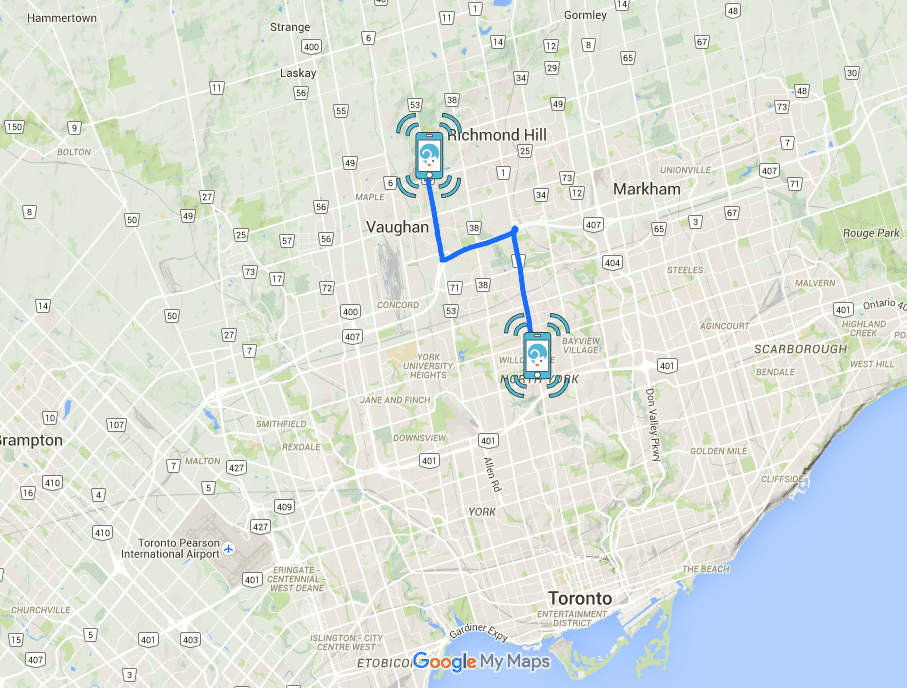
Based on the geo-location data from the Bounty app, we know that the neighbourhood Jason visited is classified under the Pets and PCs PRIZM5 segment. This lifestyle group is made up primarily of younger families in the suburbs, with an increasing presence of immigrants from South Asia, China and the Caribbean. This segment is also characterized by having filled their homes with computers and electronics, which again, is consistent with the large Samsung TV Jason tweeted a picture of that evening during the game.
Following the game, Jason specifically recalled Adidas and Mountain Dew’s advertisements and, although he gave the weekend good marks, he left some room for improvement, “I believe the first time was good but could be better. Toronto will host again soon.”
Fan Experience 2: Dan at Home
The second fan experience our student group outlined was Dan, a lifelong basketball fan who decided to watch the game at home. Dan is between 35 and 44 years old, and lives in Milton. Based on his postal code, we can see that Dan is likely a part of the Pets & PCs PRIZM5 segment, a demographic group that focuses on a suburban lifestyle, and is characterized by homes filled with electronic gear and computers.
Digging deeper into Dan’s real-time survey responses revealed an even greater breadth of information, not only about Dan’s plans, but how he followed through on them and what he thought about the game as it was happening.
We know that Dan was excited leading up to the All-Star Weekend, telling us “I love basketball and have played all my life! I’m excited to see the world’s best put on a show in Toronto.” His favourite player is Kyle Lowry of the Toronto Raptors, and he initially planned to wear his Raptors jersey while he watched the game with some family and friends at a bar. In the end, though, Dan’s plans fell through and he decided to watch the game at home on his flat screen TV, further affirming his PRIZM5 segment’s affinity toward electronics.
While he watched, Dan enjoyed some Tostitos chips, Old El Paso salsa and Palm Bay coolers while he tweeted about his time.
Following the game, Dan’s opinions stayed positive. When asked whether he enjoyed the game, he responded “What a game! Toronto representing how to host an All-Star game! #whereitallbegan,” displaying not only his enjoyment, but also his knowledge of basketball, with a hashtagged reference to the game having been invented in Canada. This, again, fits well into his suburban PRIZM5 segment—one that is often associated with participating in team sports such as basketball.
What Can Insights From Mobile Ethnography Tell Us?
The data that was gathered through the Bounty app gave our research team a better understanding of what the participants were doing during the All-Star game; detailed information regarding what they were eating and drinking, as well as their location, were all captured through this methodology. As a result, we were able to apply this information to explore possible advertising and sponsorship opportunities for any future NBA event.
We know from the data that a total of 79% of fans planned to watch the game at their own home or at a friend’s, be it on a TV set or a laptop. This indicates a large opportunity for traditional advertising to be used during these games in order to reach a wide audience. A focus on television commercials rather than product advertising placed at bars or restaurants could be very effective in the future.
Although a larger portion of participants simply ate snack foods, 40% actually ate a full meal. Furthermore, although a small proportion of our participants recalled seeing advertisements for restaurants and snack foods, none recalled an advertisement for a delivery option. Taking into account our demographic of a younger, tech-savvy crowd, sponsorship opportunities for home delivery services could be an immense prospect for smartphone-enabled delivery brands, such as Just Eat, Uber Eats or Foodora. Even fast food restaurants could get in on this opportunity by advertising game-time meal deals and delivery options for fans watching the game.
Future research projects could potentially drill this down even deeper by asking participants specifically about their snack experience, and gain further insights into their food and beverage decisions.
In addition to the quantitative summary, the team was also able to take advantage of the app’s geo-locating feature in order to create a heat map of our participants’ locations throughout the weekend.
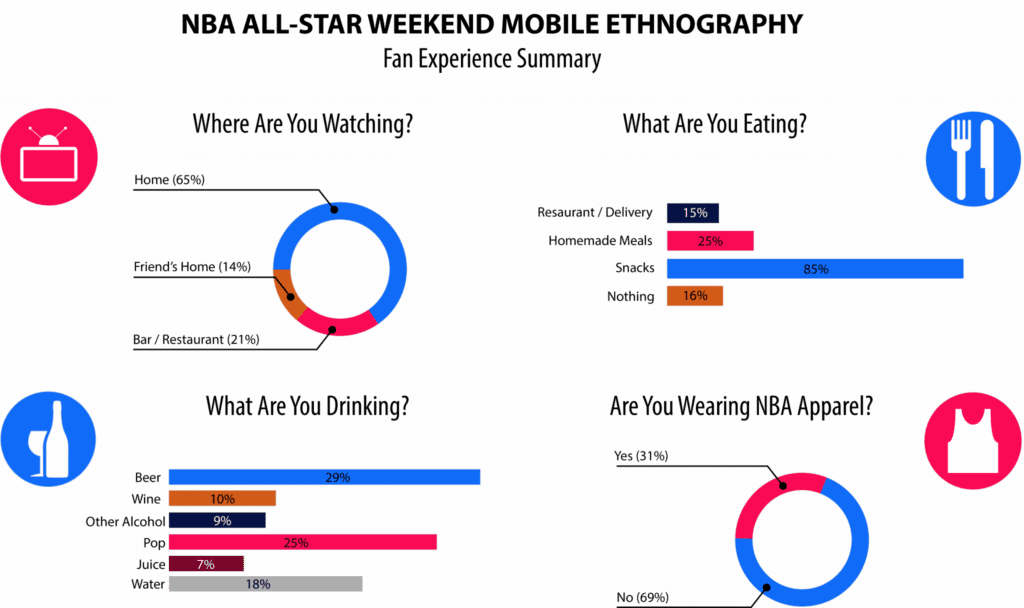
With the level of detail our clients are often looking for in terms of customer experiences or journeys, in-the moment observations are more and more valuable
With the permission of our participants, we were able to connect to passive data, and the GPS location of each user was captured to map out each individual’s activities. This was particularly useful in mapping out the fan journey in order to get a sense of where the participant spent their weekend. For marketers specifically, this tool provides valuable information that could aid in future ad design and promotions, based on popular locations/hot spots.
Overall, this methodology proved to be an exceptionally effective tool to collect in-the-moment data in order to gain a greater understanding of consumer behaviour and experiences. With the level of detail our clients are often looking for in terms of customer experiences or journeys, real-time responses are needed more and more. With the breadth of information that a mobile ethnography app like Bounty can provide, the potential for identifying hidden consumer insights is almost limitless.
Special thanks to our student partners at Humber College
With contributions from:
- MITCH WILD
- NICOLE CALDARELLI
- TAMMY TSE
- ANKITA SINGH
- RANDY DANSO
- JUHI AGARWAL
- DHILIP VINGNANALINGAM
With thanks also to Twentify. This app enables companies to mobilize an engaged crowd of smartphone users to collect field data and capture experiences; driving valuable insights and empowering better business decisions. Their platform, Bounty, coupled with the power of crowdsourcing and smartphone technologies delivers accurate, in-the-moment results, quickly and cost effectively, every time.
For more information on Twentify, contact [email protected].
